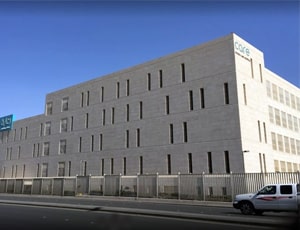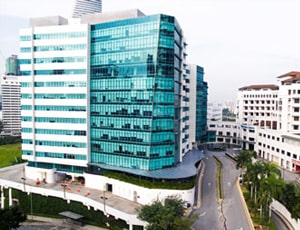Gamma Knife surgery is a type of noninvasive procedure used to shrink or kill the tumor with the help of ionizing radiation. Unlike conventional surgery, Gamma Knife surgery does not include the use of scissors or surgical blades and knives to make an incision to access the tumor.
Gamma Knife is actually the name of the technique and the equipment that is used to deliver precise radiation to the tumor site. It allows for precise targeting of the tumor without affecting the nearby healthy cells and tissues.
It is a type of stereotactic radiosurgery (SRS) and similar to other techniques such as CyberKnife and X-Knife. Each type of SRS has its own benefits and limitations and therefore, the treatment is applied after careful selection of the candidates for each of these techniques available.
Gamma Knife radiosurgery uses specialized computerized treatment planning software that helps physicians locate the small target areas inside the head. These target areas are then irradiated with extremely high precision without damaging the nearby tissues.
This type of radiosurgery is now used for the treatment of a number of conditions, including primary or metastatic brain cancers, benign brain tumors (meningioma, acoustic neuroma, and pituitary adenomas), vessel malformations such as arteriovenous malformations, and functional disorders such as trigeminal malformations.
Gamma Knife radiation is used to treat brain lesions and inoperable tumors in the brains by targeting them with enough radiation. After the procedure, the targeted lesion is expected to shrink, disintegrate completely, or stop growing any further.
This type of radiosurgery is now used for the treatment of a number of conditions, including primary or metastatic brain cancers, benign brain tumors (meningioma, acoustic neuroma, and pituitary adenomas), vessel malformations such as arteriovenous malformations, and functional disorders such as trigeminal malformations.
Gamma Knife radiosurgery uses multiple beams of radiation to converge in three dimensions to focus on a small area of tumor or lesion precisely. This permits a large volume of high-dose radiation to be delivered with accuracy.
The Gamma Knife machine commonly being used worldwide uses robotic technology for submillimeter patient movement during the procedure to ensure that the complete targeted location is irradiated.
The following are the major steps that are executed during the procedure:
Depending on the requirement and treatment planning, a patient may need 1 to 5 sessions or sittings of Gamma Knife radiation to treat the lesion.
Gamma Knife radiosurgery is a painless procedure. Most of the patients nap during the procedure and so not feel anything.
The head may hurt for 10 minutes as the pins of the head frame are attached. But the pain subsides and there is not much sensation left because of the local anesthetic which is given.
The results and effects of the Gamma Knife radiation may start appearing anywhere from a day to a couple of weeks. The results of radiosurgery are visible on CT/MRI after a few weeks to a few months. However, there can be relief in pain in conditions such as trigeminal neuralgia almost immediately.

Riyadh, Saudi Arabia
History Riyadh care hospital is a highly specialized hospital with world-class infrastructure. The ...more
![]() Accommodation
Accommodation
![]() Airport Transfer
Airport Transfer
![]() Choice of Meals
Choice of Meals
![]() Interpreter
Interpreter

Kuala Lumpur, Malaysia
History Parkway Pantai Hospital in Kuala Lumpur, Malaysia is operating under the Parkway Pantai gro...more
![]() Accommodation
Accommodation
![]() Airport Transfer
Airport Transfer
![]() Choice of Meals
Choice of Meals
![]() Interpreter
Interpreter

Delhi, India
Equipped with more than 50 specialty institutes, Indraprastha Apollo was started with the vision of ...more
![]() Private Rooms
Private Rooms
![]() Translator
Translator
![]() Nursery / Nanny Services
Nursery / Nanny Services
![]() Airport Pick up
Airport Pick up

Radiation Oncologist
Ghaziabad, India
19 Years of experience
USD 28 for video consultation

Radiation Oncologist
Noida, India
22 Years of experience
USD 42 for video consultation